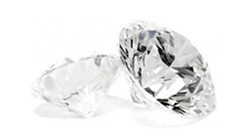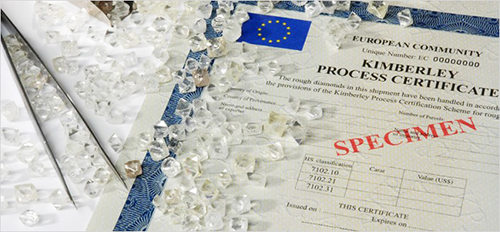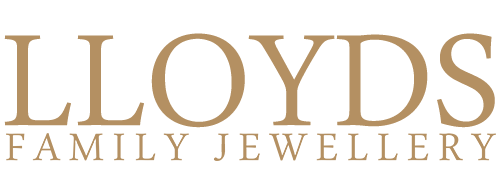All diamonds supplied within our jewellery are conflict free.
Conflict Free Diamonds
Our guarantee
Lloyds Family Jewellery confirms our diamonds to be free from funding conflict and in compliance with United Nations resolutions. Certificates provided with our diamond jewellery carry the following guarantee:
We confirm that all items of jewellery specified in this document are authentic. All materials used are genuine and UK hallmarked. Diamonds supplied are conflict free and all gemstones are non-synthetic.


What are Conflict Diamonds?
Conflict diamonds are diamonds illegally traded to fund conflict in war-torn areas.
The United Nations defines conflict diamonds as "diamonds that originate from areas controlled by forces or factions opposed to legitimate and internationally recognized governments, and are used to fund military action in opposition to those governments, or in contravention of the decisions of the Security Council."
Most diamonds are mined in large scale industrial operations however there has been cases where a small percentage are sought to fund conflict in war torn areas. The good news is that strict legislation is now in place to stop illegitimate diamonds from getting on the open market.
What is being done?
Amid growing concern over human rights violations and atrocities committed against innocent victims in diamond producing countries, the World Federation of Diamond Bourses and the International Diamond Manufacturers Association passed a resolution at their Antwerp meeting in July 2000, creating the World Diamond Council.
The resolution called for the newly formed WDC to include representation from the diamond industry itself and also from among countries where diamonds play a major economic role and from the international banking sector. The ultimate mandate for the World Diamond Council is the development, implementation and oversight of a tracking system for the export and import of rough diamonds to prevent the exploitation of diamonds for illicit purposes such as war and inhumane acts. Human rights activists refer to diamonds exploited in this way as blood diamonds or conflict diamonds.
Kimberley Process
The Kimberley Process started when Southern African diamond-producing states met in Kimberley, South Africa, in May 2000, to discuss ways to stop the trade in ‘conflict diamonds' and ensure that diamond purchases were not financing violence by rebel movements and their allies seeking to undermine legitimate governments.
In December 2000, the United Nations General Assembly adopted a landmark resolution supporting the creation of an international certification scheme for rough diamonds. By November 2002, negotiations between governments, the international diamond industry and civil society organisations resulted in the creation of the Kimberley Process Certification Scheme (KPCS) . The KPCS document sets out the requirements for controlling rough diamond production and trade. The KPCS entered into force in 2003, when participating countries started to implement its rules.
Under the Kimberley Process, diamond shipments can only be exported and imported within co-participant countries. Trade between participants and non-participants is not allowed. Only certified shipments of rough diamonds are permitted to enter or leave a participant's country.
Visit www.KimberlyProcess.com for full details.


From Mine to Retail
Most Diamonds are mined in large scale operations in Africa, Australia, Canada and Russia. The most common route to market is through the channels of De Beers or other mining companies such as Rio Tinto (Australia) and BHP Billiton (Canada). After mining the diamonds are sorted into sizes, shapes grades and other categories and made ready for shipment in categorised parcels. These mining companies must abide by the strict rules set out under the Kimberly process, all shipments must be certified and only exported to other member countries registered under the Kimberly process.
Every year these mining companies set up sales events by invitation only to a select number of buyers. De Beers’ marketing arm for example, the Diamond Trading Corporation (DTC), holds ten week-long selling sessions. Only a handful of diamond manufacturers from around the world are allowed to attend, these sights are by invitation only (known as diamond sight holders, there are currently only 79 companies approved to purchase direct from these events). These sight holders may choose to cut the rough diamonds they buy themselves, or they may choose to sell some of the rough diamonds to smaller manufacturers.
We can purchase diamonds direct from Diamond Sight Holding companies, or we also get great deals from dealing with members of the London Diamond Bourse which is like a stock exchange for Diamonds.
The Bright Side of Diamonds
Diamonds have been know to have a bad reputation in recent years. But did you know that as well as being stunningly beautiful, diamonds and the diamond trade also bring a lot of good to the world. Here are some facts about how the diamond trade helps the people of the world…
5 Million people worldwide have access to appropriate healthcare as a result of revenues from diamonds.
Diamond revenues enable every child in Botswana to receive free education up to the age of 13.
10 million people world wide are directly or indirectly supported by the diamond industry.
The diamond industry generated over 40% of Namibia’s annual export earnings.
The revenue from diamonds is instrumental in the fight against the HIV and Aids pandemic.
Approximately one million people are employed by the diamond industry in India.
Sources: www.KimberlyProcess.com, www.diamondfacts.org, www.gia.edu
